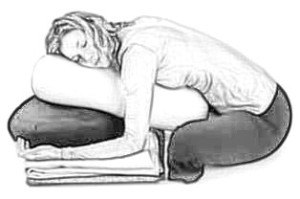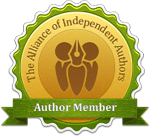
When you create with openness, with a willingness to trust and be vulnerable for your art, your writing is all the more authentic and true because it is uncensored, drawn from the deepest part of yourself — pure feeling articulated on the page — but it can be hard to share our truths, to write without censor, especially when the act of doing can lays us bare quite unlike anything else.
Create with Openness

Being vulnerable is about being open, open to both the positive and the painful, and translating this into art. When you are open as you write, willing to drift and let your writing guide you, as opposed to you guiding it, magic happens. It’s as if in letting go and relinquishing your control of a piece, that liberty finds its way into the language, and the words too no longer seem inert but alive; breathing with their own pulse and cadence, with their own timbre and tone.
It’s the same with making art. Maintaining a receptive state leads to exploration, a willingness to discover, and take risk. When we let go – of our preconceptions, of our judgements of our own work – write without censor and stay loose and open, it’s the ideal state to create because you are not fixed or ridged in your approach but open to discovery, willing to be vulnerable, and in turn put that vulnerability on the page.
Embrace Your Vulnerability

Being open may make you vulnerable but to create you need to be willing to be vulnerable. Unless you are open to both pleasure and pain, the yin and the yang, the creatively spectacular days, as well as the creatively empty ones – in life and in art – it would be to close yourself from the greatest source of inspiration of all, that is your unique fusion of experience, feelings, craft, and skill.
“As you’re writing, remember that to be human is to feel. So get all that on the page—all that anger, hope, passion, love, rage, despair, anxiety, and shame. Go toward the subjects that scare you. If a scene I write doesn’t make me feel, then I know I need to work harder, go deeper, explore more,” says author and editor for Writer’s Digest, Chuck Sambuchino.
Let your words throb with humanness, with flaws. Allow your innate humanity and wealth of feeling to bleed in ink onto the flesh of the page. The moment you let go of the need to censor your writing, and write from a place of openness, not censorship, it’s palpable in your prose. Write your rawest emotions and reflections, embrace your vulnerability, and let it spill into your writing.
Connect with Your Heartbrain

“The mysterious writerly core of you is your heartbrain. More than brain. More than heart. It’s where your magic lives,” says author and contributing editor for Writer’s Digest, Elizabeth Sims in her brilliant book, ‘You’ve Got a Book in You: A Stress-Free Guide to Creating the Book of Your Dreams.’ “You need to engage your heartbrain, that is to say, your whole, deepest self.”
The ancient Taoists also placed great importance on connecting with your heart, moving from your belly, and staying open. In their healing system, there are three ‘brains’ or ‘minds’, in the head, heart, and belly: the upper Tan Tien, the middle Tan Tien, and the lower Tan Tien, respectively. If you practice martial arts, Nei Dan or Ba Duan Jin, you may already connect with the three minds. I’ll go deeper in a post of its own (it’s very addictive stuff), as it can truly enhance both process and prose.
“Every now and then check with your gut, with your feelings. Do you get the feeling something waits under the surface and is straining to come up? Tune in, get calm, listen. Let it come. Write it down,” says Elizabeth. “Perfect consciousness is your reward when you tune into your creative core, when you unleash your heartbrain. When you tap into your heartbrain, you’ll be writing up a storm.”
Do Not Hide Your Truth

Creativity by its very nature springs from such a deep part of ourselves that sharing our offerings can create internal tension, resistance or anxiety about voicing our truth. As we translate the intangible into language, and write without censor, it can unearth us but is also be the most healing practice of all if you let go, stay open, and allow the words to bubble up like air in a geyser, exploding in vibrant, hot pops.
Yet if we are overly concerned with the opinions of others or worry too much about what they think of our writing, we put up barriers between us and our work. Although it’s a form of self-protection, they mask our true thoughts, and in turn, our creative expression, whether we are aware of it or not. A tip I love is to write the things you would never want your parents to see, anyone see, in fact, without censoring, without masking your own voice and truth.
“When you start to worry about what others will think, that is the writing that will affect people the most. The only way to achieve that is by going to your most vulnerable places,” says Chuck Sambuchino. “My particular rule for writing—If it doesn’t scare me, there’s no power. When what you’re writing scares you, it’s usually a sign that you’re being real.”
Write Without Censoring

“Don’t censor yourself. Certainly don’t stop yourself from writing on a taboo subject,” says Elizabeth Sims. “If for instance you find yourself thinking, “Oh I shouldn’t write about sexual abuse,” do a mini storm write. Ask your heartbrain, “what if I did?” The best artists know that if they dedicate themselves to the process a beautiful result will follow. It might not be the result they first envisioned but it will be honest and true.”
A ‘stormwrite’ is Elizabeth’s heart-centred version of free-writing. It’s a little like free-writing on gas. More pep, more process, more heart. “It’s a process by which you open your heartbrain and provoke it not to merely dump stuff out, but generate new questions and ideas that lead you to more good stuff. Unleash your curiosity; fling open possibilities. If you do, ideas will come up faster than you can address them. The key to developing ideas in writing is to plow up questions and chase down tangents. That is what stormwriting does.”
Sharing Our Vulnerability
Sometimes we resist making ourselves vulnerable or are met with criticism when we do. No matter what dreadful eventuality your inner killjoy or critic has conjured up – for they’re perhaps the greatest storytellers of all – in hiding our truth is to thwart the finest resource we have: our raw feelings and experiences. “Stories are vital; they help us to heal ourselves and transform the world in which we live says Diane DeBella, author, and educator on women writers and history.
“We need to support one another as we find our voices and share our truths. Sharing our stories makes us vulnerable to criticism and judgment. Yet our life lessons serve as a catalyst for other women who desire to tell their own truths. Women have been sharing their stories for centuries. While they haven’t always been included in the literary canon, they have found the courage to speak their truths—even when they have not been heard.”
It’s exactly this openness which fuelled so many immaculate works of literature. In sharing their own truth, feeling, and experience, these writers, poets too, relieve a little of the burden of the human spirit, and make each of us feel less isolated in our stories or experience precisely because their offerings are so open and vulnerable, so real and true.
“One ought only to write when one leaves a piece of one’s flesh in the inkpot, each time one dips one’s pen.” ~ Leo Tolstoy
Trust the Process

When you create with openness, write with openness, you invite trust. Trust allows the surprise and discovery because you no longer stop to tweak, or edit your work. You keep moving, keep open. No matter how convincing the voice in your head is, instead of censoring your creative tangent, discoveries, and writing, maintain a receptive state of openness.
Trust often starts out as a simple decision. By choosing to be supportive of yourself in a gentle and encouraging manner, instead of being critical, or hiding your inherent humanity, vulnerability, and truth, in the process of creating you’ll find the doubts diminish, and your courage to voice your truth is strengthened too. Let go, stay open, and trust the process. Allow your offerings to resonate with vulnerability, openness and you’ll speak your truth.
Yoga to Embrace Vulnerability and Create Openness
Opening Your Heart with Yoga: The Sphinx (Salamba Bhujangasana)

The Sphinx is wonderful for opening your heart, instigating courage, openness and compassion for yourself too. This is the baby back bend, an asana generally mastered before the Cobra Pose (Bhujangasana), or more demanding back bends. It creates openness and trust by opening your heart centre and chest, and is a process of both effort and surrender.
Contraindications: Avoid if you have a recent or chronic back or neck injury, are pregnant or after surgery.
- Lie down on your belly, with your forearms flat on the mat, with flat palms, keeping them shoulder-width apart. Allow your back to soften. Keep breathing gently.
- Press your forearms down onto the mat, use your arms to press the mat away from you and inhale as you gently lift your head and chest, keeping your neck and spine in line.
- Ground through your tailbone to protect your back, keep breathing gently, and ensure your elbows are close to your sides.
- For a more gentle Sphinx, rest on your ribs, sliding the elbows away to reduce compression in the lower back.
- Hold for 5-8 breaths. Exhale and release. To end, you may like to relax in Balasana (child’s pose).

Head-to-Knee Forward Bend (Janu Sirsasana) with Acupressure
- Sit upright and extend both legs forward.
- Bend the right knee, pressing the heel into the inner right thigh, and letting the toes touch the inner left thigh. Keep the left leg straight, resting it on the centre of the calf with the toes pointing up.
- Inhale and extend the arms up. Use your inhalation to draw the abdomen back and up as you spread and lift the chest. Exhale and extend your spine as your fold forward and reach to hold the left foot with both hands or loop a strap around the foot.
- Instead of staying in Janu Sirasana, using your left hand, press the acupressure point, Yan Quan or Kidney 1, which is found in the centre of the upper sole of the foot. This point grounds you to the earth and also helps to rebalance the kidney meridian. In doing so, you will find yourself feeling less prone to fear, from unease and anxiety to feeling fearful and phobic, it’s a powerful point to know.
- Fuse this with the point Ming Meng, which is found on your back, directly opposite your Tan Tien (the main point in martial arts and Taoist Nei Dan practice). The Tan Tien is four finger-widths below your navel. Ming Meng is opposite this on your back. Place your palm over Ming Meng. This has the soothing effect of reassurance, calming you and also making you feel comfort and loved.
Together with the asana, these acupressure points are powerful in both their soothing reassurance and stillness, helping you feel grounded and strong. You may like to finish with a few [gentle] thumps on the Sea of Tranquillity point, at the dead centre of your breastbone, in the little dip, in line with your nipples, for both courage and openness.
Gentle Supported Forward Bend

If you are feeling more vulnerable than open, try this incredibly gentle asana from the therapeutic form of restorative yoga. Hugging a bolster and resting your head on its support provides a natural sense of security and comfort, a little like being hugged, and [almost] everyone loves a good hug. It’s especially useful if you are inflexible or have other health issues. It relaxes the hips and back, unravelling the stress on the spine.
- Sit cross-legged on the floor.
- Lean forward onto the support of a sofa, a chair, or a stack of pillows, blankets, or cushions. If you have a bolster, place one end in your lap and the other end on the sofa, the chair, for support.
- Rest your head. If you are using a bolster, hug it in any way that feels comfortable, turning your head to the side. Ensure that whatever support you are using is high enough to support you without creating any strain in your back or hips. If you feel a strong stretch that is uncomfortable to hold, you need to add more support.
- In this gentle restorative asana, the belly, chest, and back all expand and contract in sync with each breath. Feel the movement of this in your body as you take each breath.
- Feel your belly and chest gently press into the support of the bolster or pillows as you inhale and allow the sensation of your breathing deepen the sensation of being hugged.
If you find yourself feeling vulnerable for no real reason, or have fears and anxieties that create a subtle feeling of ongoing unease, the Bach flower remedy, Aspen can help release this. It’s generally used for fear of the unknown and also helps stabilise your emotions and bring reassurance if you’re feeling vulnerable.





I am so grateful this morning for this particular post, not only for its content but also for HOW it was said. I have heard some of these ideas but these words linked in this way by this writer was how they got through to me which reminds me of the importance & uniqueness of each of us “life translators.” Thank you so much and be well!